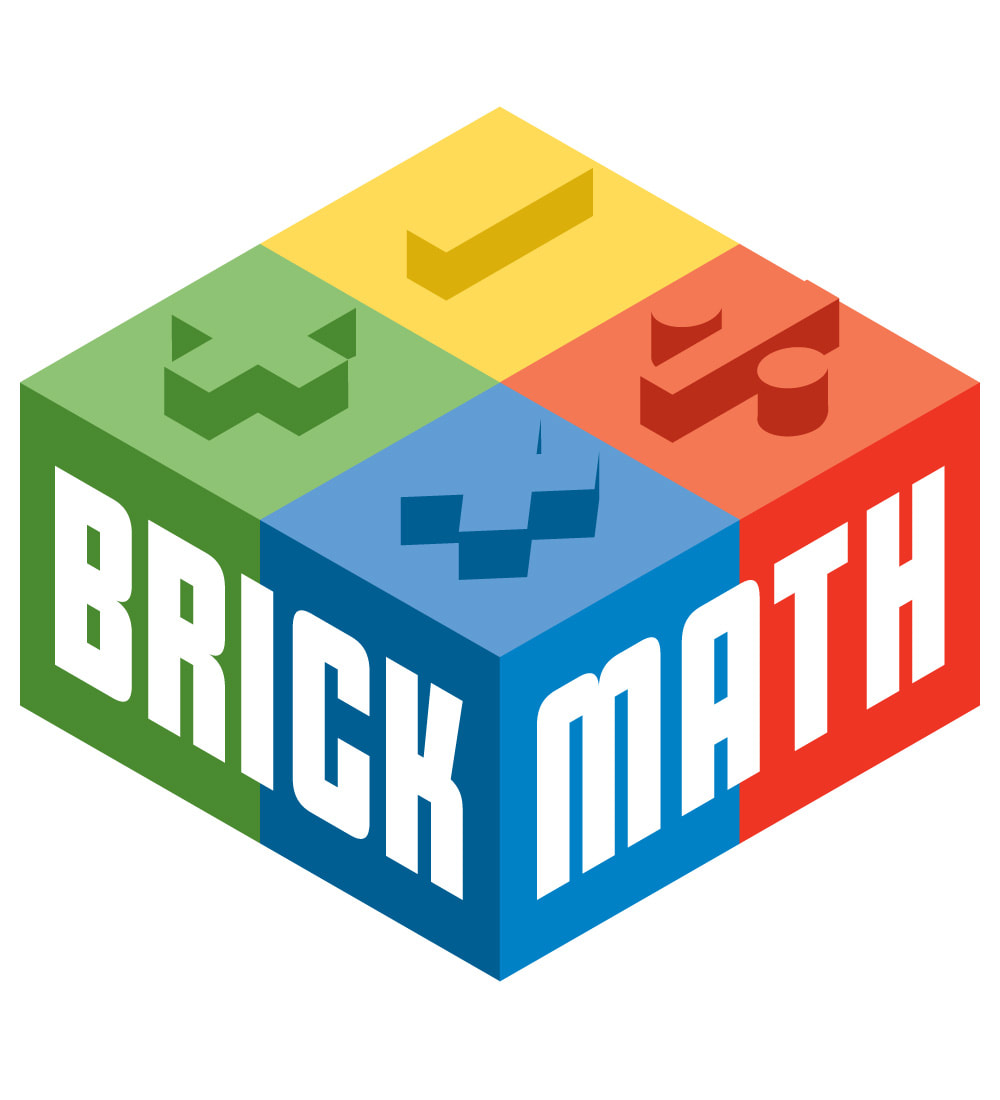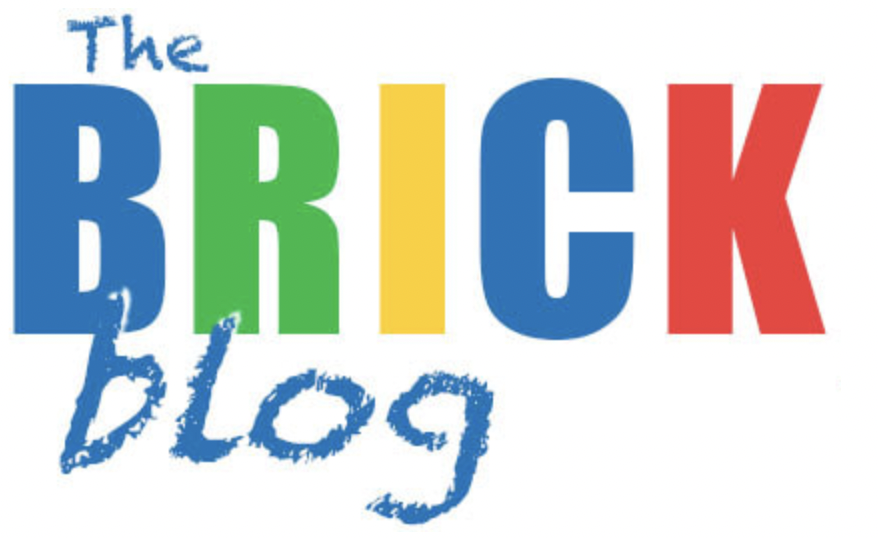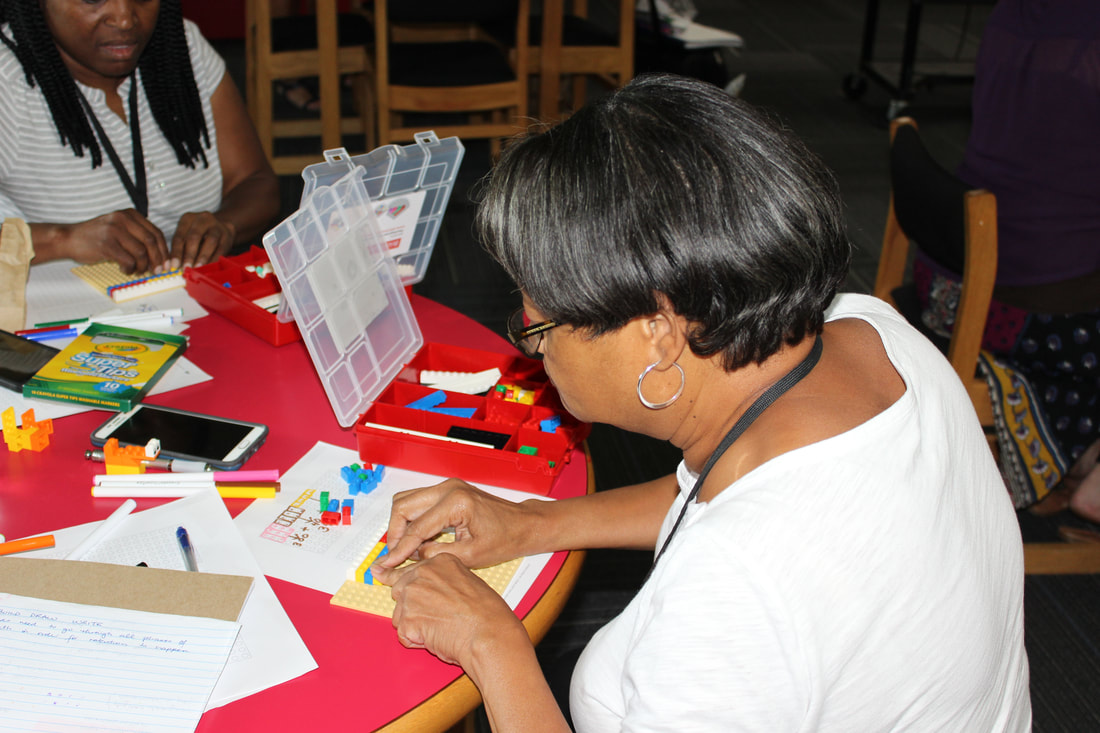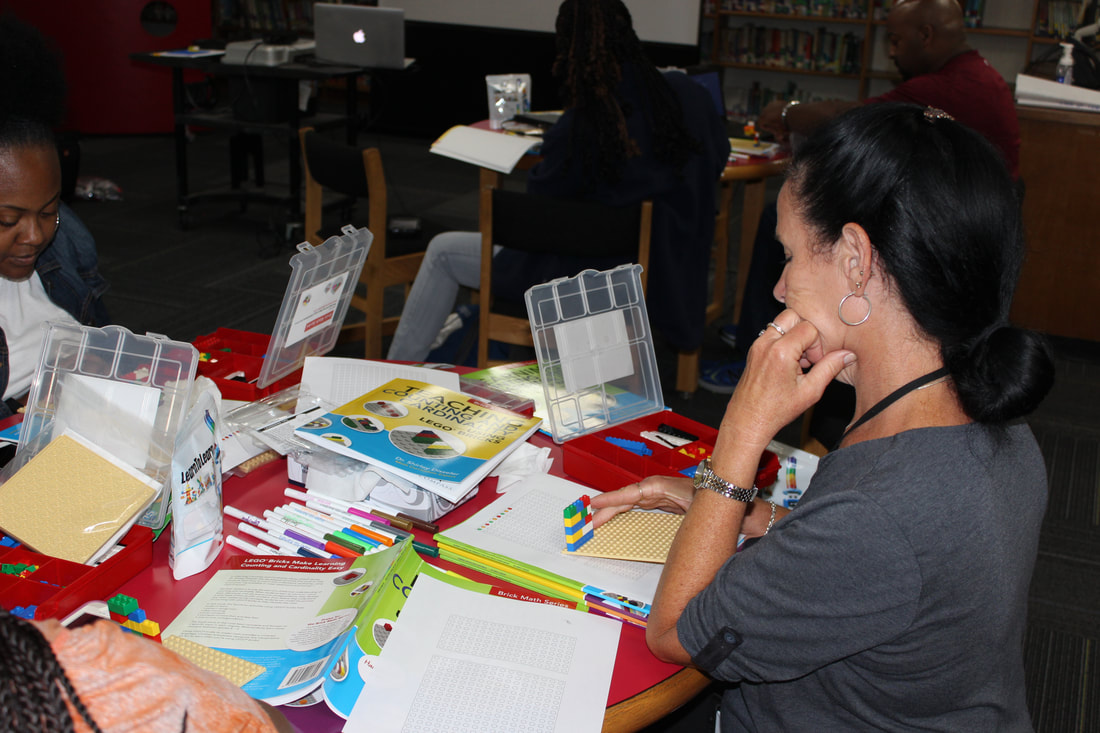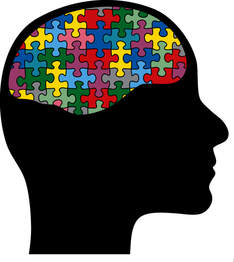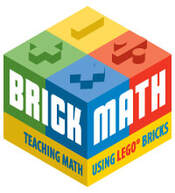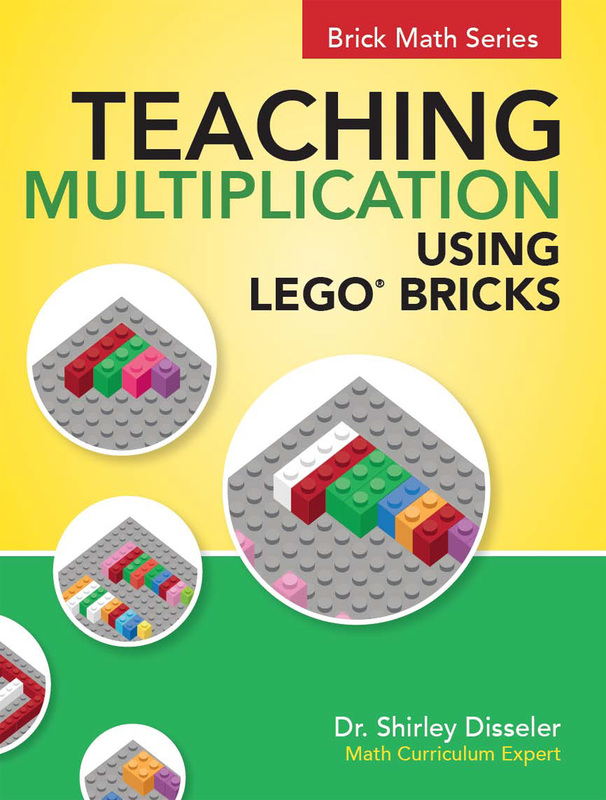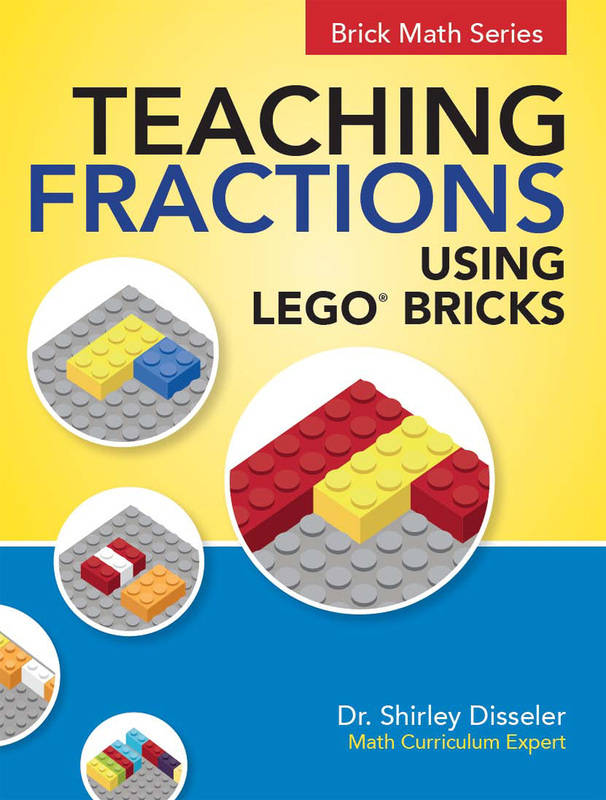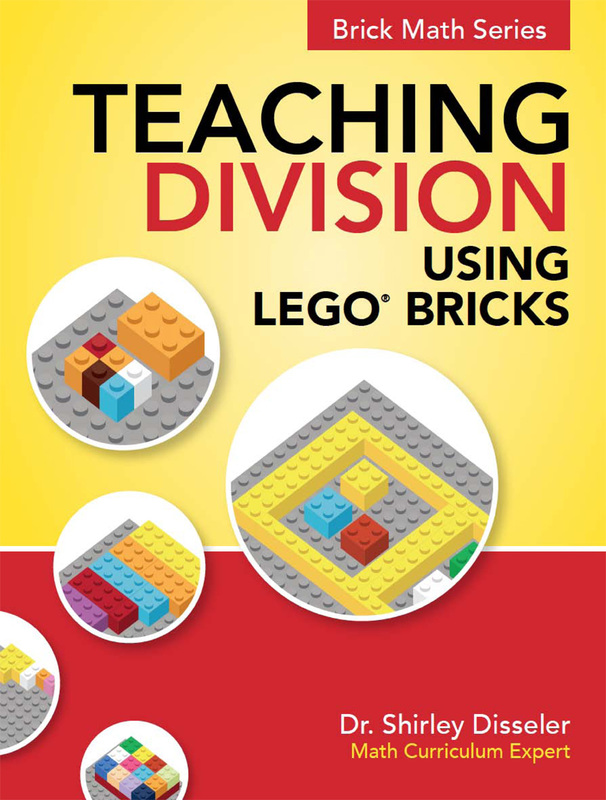|
by Dr. Shirley Disseler
If I had a dollar for every time I’ve heard from teachers, ”Students just need to learn the math! They need to learn the procedures so they can ace the test”. . . well, I’d have a big pile of cash, that’s for sure! I know that data is key in schools today, but we are not educating students to be test takers—we are educating them to use math in their daily lives and to know why it works the way it works. We want them to have good number sense, problem solving strategies, and mental math frameworks. Using manipulatives is central to this process as students move through learning trajectories in math that include conceptual, representational, and abstract levels of understanding. If we try to skip the conceptual or representational learning and go straight to the more abstract level of procedures, we will create a gap in learning that will hurt the student later on. Too many classrooms omit the concrete application that creates conceptual understanding. By sixth grade you can easily tell whether students have been exposed to manipulative processes or not. Students who have not used manipulatives in the learning process often have gaps in their ability to think through a problem logically or to show their work. The LEGO brick allows for the concrete math to be discovered, which helps students understand the “why” behind the math. Posing questions in context while building models with the bricks encourages a sense of inquiry. Students ask questions about the math, discover invented strategies, and “play” with numbers. The LEGO bricks offer opportunities for students to build, draw, and write about possible solutions. This opens the door for discourse about math and number theory. So when teachers ask me, “Is all this building with bricks really necessary?” my answer is always, “It is not only necessary, it is imperative if you are teaching for more than the test.”
0 Comments
by Dr. Shirley Disseler
According to 2017 research by the LEGO Foundation, using LEGO bricks ignites four key types of processing and 24 key skills in the brain that lead to great retention of information. The four types of processing are:
Modeling and building with bricks to learn math helps with children’s self-regulation skills. These enhance the skills of emotional regulation and attachment to content, long-term memory, attention, mental imagery, and system thinking. During the process of self-regulation, the brain places a “file folder” for that model in the long-term memory of the brain. Using bricks when learning math helps develop the child’s executive function, which is tied to the skills of visual perception, initiation, adaptive social functioning (collaboration), and one’s ability to self-assess. Being able to actually see the steps in a math problem by modeling it with bricks is a great way to visualize what the math means and why it works. Learning math using bricks also develops the process of symbolic representation, which directly leads to the skills of kinesthetic awareness, spatial visualization, sensory-motor abilities, mental rotation, and working memory. When you learn math, you identify numbers and spaces by visualizing what they represent or by using mental math. The process of building with bricks places the focus on the eyes and the hands, which lead to cognitive understanding and the ability to visual a number or a space. The last of the four processes enhanced by building with bricks is spatial ability. This process provides a greater short-term memory, fine motor skills, and increased cognitive flexibility. In math, the ability to utilize invented strategies, think logically, and use reason to determine solutions is all part of cognitive flexibility. Building brick models enhances fine motor skills by providing a tactile experience. It looks like the brick is the brain’s new best friend! It helps kids attend, engage, and focus on learning through building brick models with their hands. 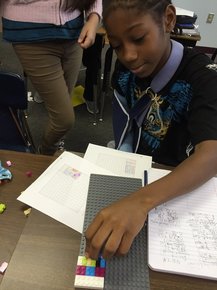 by Dr. Shirley Disseler Teachers of gifted students need to encourage them to think, create, and problem-solve. Sounds like a perfect use for Brick Math, with its hands-on modeling with LEGO® bricks! But I’ve found that using Brick Math with gifted students can be an interesting challenge. Teaching Brick Math with gifted students has opened my eyes. Gifted students often want to get right to the answer and check the problem off the list as “completed.” They do not want to show work, write about it, or discuss with others how they got their solutions. I have found that many of these students don’t really know math. They know how to do math procedurally. They can tell you how, but they can’t tell you why! Standardized scores of US gifted students continue to remain stagnant over time because we are not challenging them to think. We are only challenging them to produce. I served as a teacher of gifted for math at the middle grades level. I often recognized in my students their need to be perfect. When such students were forced to explain how a math problem worked, they worried about being wrong and were afraid to take risks. I began to have them write out everything to explain it clearly. It was difficult for them at first, because they weren’t always earning 100 on every test, and their parents got worried. But over time, their test scores grew tremendously as they became more comfortable explaining the process behind the math, because they were developing a deep understanding. We can boost test scores and increase 21st-century skill sets if we encourage explanation, justification, and collaboration among our students. Creative play with content helps our brains explore new ideas and solutions. Using methods that are engaging to the mind create a lot of energy in young people. And energy creates a passion for the subject. So…encourage your gifted students to play with math! When they see that it’s not always about just getting the right answer, they’ll start to develop the true understanding that is the foundation for math fluency and excellence. by Dr. Shirley Disseler
Have you ever been in a room where you did not understand what the presenter was saying? Not just because it was difficult information, but because it was in another language? That’s what your ELL (English Language Learner) students may be experiencing in your math class. Students who have limited English proficiency struggle with vocabulary that teachers often see as ordinary. This is particularly true with math because words that are math terms are often something else, too. For example: pie and pi are homophones, product can be something you purchase or the answer to a multiplication problem, and terms like plus sign are used even though they are no longer acceptable in the math world. Because the words are confusing, ELL students need a more hands-on approach. When they have tools to model the math, can draw to show understanding, and view pictures to see how to do things, they have a better chance of math success. They need the three-step process for true math retention — Do-Draw-Write/Explain — to truly comprehend the content. Many teachers are not aware that some ELL students are born right here in the United States. Students living in poverty or in those who do not learn to read well can be part of the ELL category. Some kindergarteners come to school knowing less than 3000 words, and this greatly inhibits their ability to learn math through word problems in context. Using LEGO® bricks to model mathematical thought reduces the stress for ELL students. The universally known product puts students on a more level playing field with their same-aged peers and provides a common conversation for modeling math content. I have seen many ELL students learn to do math with bricks. As they progress, they demonstrate true understanding of mathematical processes and conceptual ideas. Using the bricks is a great way to put students at ease with the learning process to build their confidence and spark engagement and motivation in the classroom. 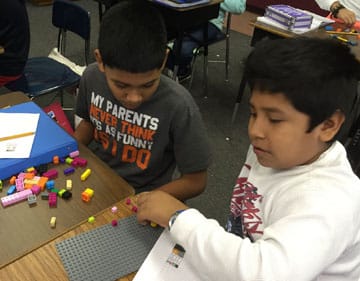 by Shirley Disseler Have you visited an elementary math classroom lately? With the emphasis on testing and accountability, many schools have created factory-like models of education. We know worksheet repetition is not what motivates children to learn. Is there a better way to teach math? Yes! I’ve had tremendous success using LEGO® bricks as a math manipulative. Bringing out the bricks that children know and love immediately adds excitement to the classroom. Classroom management is key when teaching with bricks. So, here are ten tips to help you when you’re starting to use the Brick Math Series program:
Remember: with excitement comes noise! The difference is that this is productive noise. Start small, build up levels of difficulty, and differentiate the level for your students. You’ll find your students are excited and motivated to learn mathematics! by Shirley Disseler
Some students just don't like math. Or so they say. But I have found that almost all students will enjoy learning math if we make it meaningful to them. That means building a knowledge base from real experience. The way to do this is to teach math in a hands-on way. A simple tool that really helps math become meaningful to students: the LEGO® brick. I’ve been teaching math using LEGO® bricks for years, and the bricks are the best manipulatives I’ve found for helping students discover how math works. Research suggests that a major reason why students don’t achieve in math is their lack of motivation and engagement. It’s not what we are teaching that doesn’t grab students’ attention, but how we teach. But when you give your students a tool for modeling math concepts that just happens to be a familiar toy for most kids, you start your math lesson off on the right foot. Students experiment with the bricks, trying out strategies themselves until they discover a solution. Studies have shown that students learn best when they construct their own knowledge from real experiences that produce an outcome. In the educational research, this is called the “constructionist” or “constructivist” teaching technique. LEGO® bricks can be manipulated by students to help them understand early math concepts such as counting and cardinality. Models of addition and subtraction problems make the math clear to young students. Modeling with bricks is also the perfect way for students to learn the meaning of math concepts such as fractions, multiplication, and division. A student told me one day, "I finally know what a fraction is. I can see it!" That’s what hands-on math is all about. I have found that when teachers teach at a slower pace, employing real-world problems and using manipulatives such as LEGO® bricks, students are motivated and engaged in the math. They develop a “need to know.” True learning happens when students want to know more. In many of today’s classrooms, teachers are running against a clock to get as much math taught as quickly as possible. But it doesn’t matter how much math you teach unless you also make sure that students are learning the content along the way. Making math meaningful to students is the surest way to engage them in learning and help them achieve. A hands-on teaching method using LEGO® bricks as manipulatives to build models of math concepts really works. Wouldn’t it be exciting to turn a student who says he doesn’t like math to one who asks you, “Can we do more math today?” We love celebrating with our authors, which is why we're super excited about the coverage Shirley Disseler is receiving from her Brick Math Series. Dr. Shirley Disseler, associate professor in the School of Education at High Point University, published the first title in a 10-book LEGO series aimed at helping teachers and parents teach math in an engaging and accessible way. Disseler is currently hosting a STEM (science, technology, engineering and math) Camp at HPU for children in the community. See the video below!  Dr. Shirley Disseler, Associate Professor at High Point University in High Point, NC, is the country's leading expert on using LEGO® bricks to teach math. The first three books of her new ten-book Brick Math Series showing how to teach math using her hands-on methods are now available:
Each teaching book has a companion student edition that gives additional practice to your students to reinforce the math concepts as well as assessments for the teacher to gauge student progress. This new hands-on method to teach fractions, multiplication, and division has been successful for students in North Carolina and other states. The books offer step-by-step guidance for teachers and students, making it very easy to start teaching math using LEGO® bricks as the perfect manipulative. Research has shown that manipulatives such as LEGO® bricks help students learn. The Journal of Instructional Pedagogies and the NRICH project of the University of Cambridge have both found that a hands-on approach to teaching math is one of the best ways for students to learn.
As the school year begins, you may be searching for better instructional methods for your teachers. The new Brick Math Series is an effective, hands-on teaching method that will get your students engaged and excited about learning math. |
Categories
All
Archives
July 2024
|

